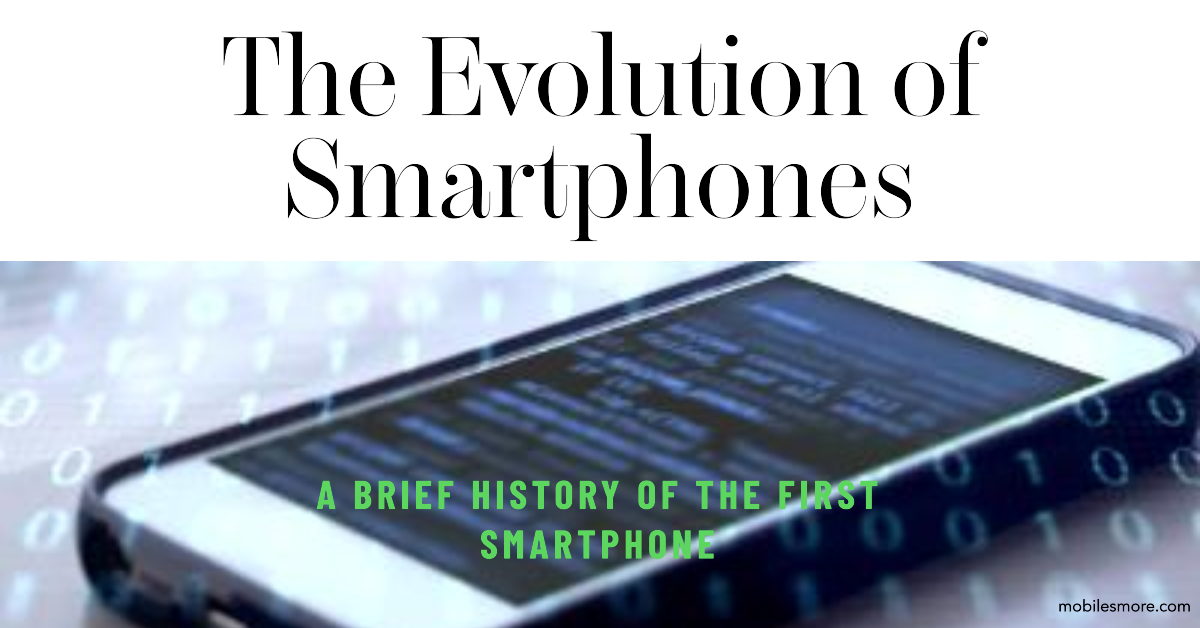Introduction:
In the 21st century, it’s challenging to imagine life without smartphones, those pocket-sized powerhouses that have become an indispensable part of our daily existence. These devices are our communication hubs, our entertainment centers, and our gateways to the digital world. But have you ever wondered where it all began? Who can be credited with inventing the first smartphone? In this blog post, we will take a journey back in time to explore the fascinating history of the first smartphone.
The Birth of a Revolutionary Idea:
The concept of a device that combined the functionality of a mobile phone with the features of a personal digital assistant (PDA) can be traced back to the early 1990s. It was an era when cell phones were large, cumbersome, and primarily used for voice communication. The idea of merging the capabilities of a PDA with a mobile phone was revolutionary, and it laid the groundwork for what would become the modern smartphone.
IBM Simon Personal Communicator (1992):
The first device that can genuinely be called a smartphone is the IBM Simon Personal Communicator, released in 1992. Designed by International Business Machines (IBM) and manufactured by Mitsubishi Electric, this remarkable gadget was way ahead of its time.
Key Features of the IBM Simon:
- Touchscreen Interface: The IBM Simon featured a touchscreen interface, a groundbreaking innovation at the time. This interface allowed users to interact with the device by tapping on the screen.
- Communication Capabilities: It wasn’t just a mobile phone; it allowed users to make cellular phone calls, send and receive faxes, and exchange emails. In a world where cell phones were primarily used for voice communication, this was a game-changer.
- Address Book and Calendar: The device also included basic productivity tools. Users could store contacts in the address book and manage appointments in the calendar.
- Applications: While the selection was limited compared to today’s app stores, the IBM Simon had a few basic applications, including an address book, calendar, and sketch pad.
- External Connectivity: It could be connected to a PC for data synchronization, enabling users to transfer data between their computer and the Simon.
- Battery Life: The battery life was relatively short, comparable to early cell phones.
Limitations and Impact:
The IBM Simon, despite its revolutionary features, had several limitations. It was bulky, lacked the sleekness we associate with modern smartphones, and had a high price tag, making it accessible to only a select few.
However, the impact of the IBM Simon on the future of mobile technology cannot be overstated. It introduced the concept of a handheld device with multiple functions beyond voice calls. The touchscreen interface was a significant leap forward, foreshadowing the user-friendly interfaces we now take for granted.
The IBM Simon served as a precursor to the smartphones we use today, highlighting the incredible journey of innovation that has brought us from this early prototype to the sleek, powerful devices that have become an integral part of our lives.
The Road to Modern Smartphones:
The IBM Simon was a significant milestone, but it was just the beginning. Over the next decade, several companies and platforms made their mark on the world of smartphones:
- Nokia: In the late 1990s and early 2000s, Nokia emerged as a dominant player in the smartphone arena. Devices like the Nokia 9000 Communicator introduced the world to the possibilities of a mobile device with internet connectivity. However, these early smartphones were still bulky and lacked the sleekness we associate with modern devices.
- BlackBerry: In the mid-2000s, BlackBerry emerged as the preferred choice for business professionals. Their devices offered secure email communication and physical QWERTY keyboards, making them ideal for corporate use.
- Apple’s iPhone: The year 2007 brought a game-changer: the iPhone. Apple’s iconic device combined a sleek design, a user-friendly interface, and a wide range of applications. The introduction of the App Store in 2008 transformed how we use smartphones, turning them into multifunctional tools for work and leisure.
- Android’s Rise: Around the same time, Google introduced the Android operating system, which offered an open platform for multiple manufacturers. This marked the beginning of a diverse ecosystem of Android smartphones, giving consumers more choices than ever.
Conclusion:
The history of the first smartphone is a journey from a bulky, groundbreaking prototype to the sleek, powerful devices that have become an integral part of our lives. The IBM Simon Personal Communicator may have been the first to merge the functionalities of a PDA and a mobile phone, but it was just the beginning. It laid the foundation for the technological advancements and innovations that have transformed the way we communicate, work, and entertain ourselves. As we look back at the birth of the first smartphone, we gain a deeper appreciation for the incredible progress in technology that has shaped the devices we use today. The journey from the IBM Simon to modern smartphones represents not only a technological evolution but also a cultural and societal shift in how we connect and interact with the world.

